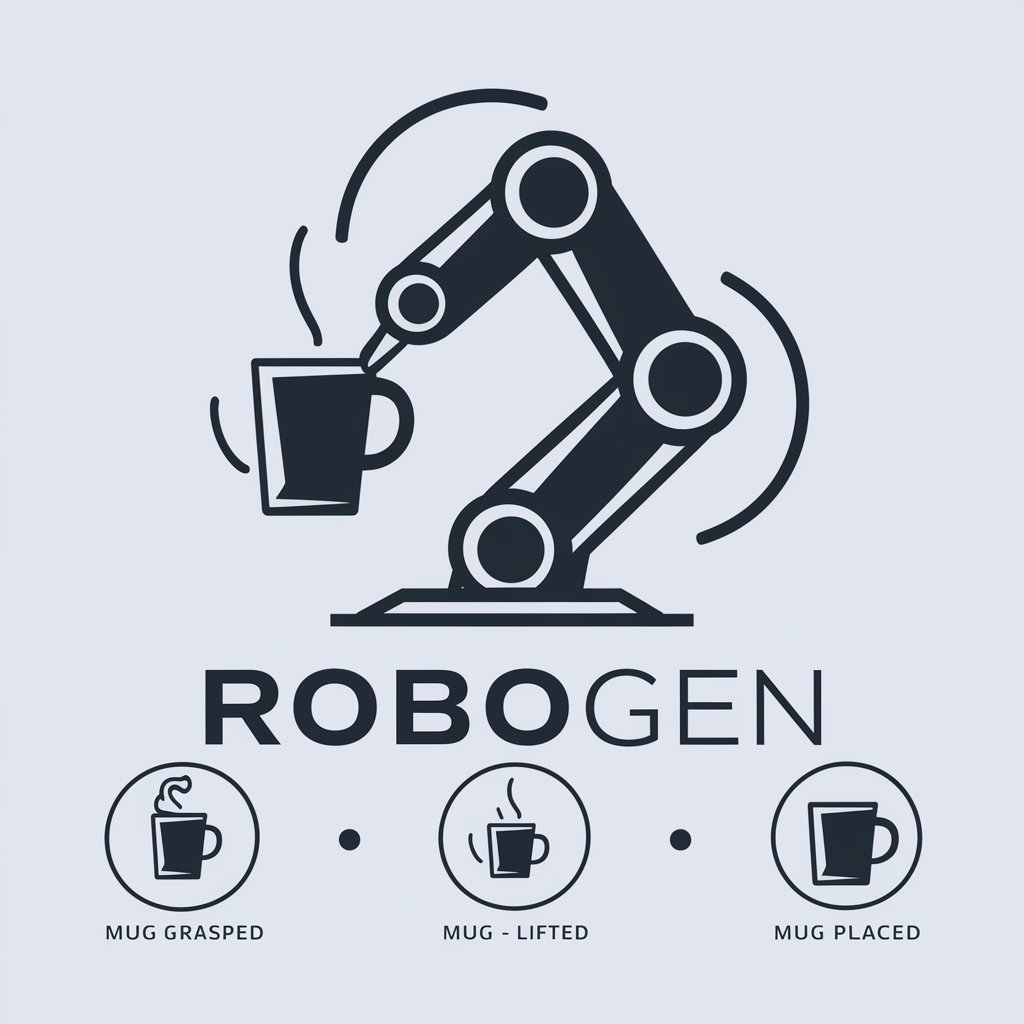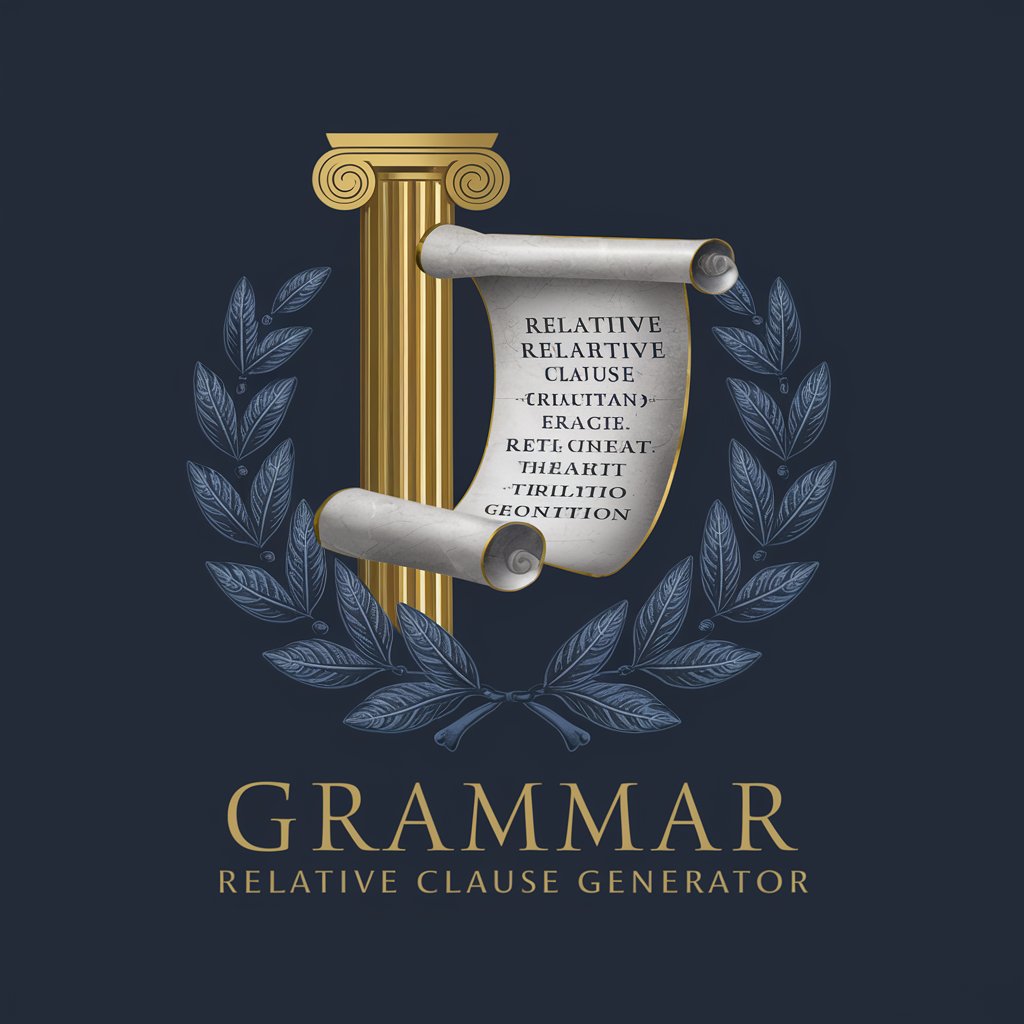RoboGen Decompose and Generate Reward or Primitive - Task Decomposition for Robotics

Hello! Let's optimize your robotic tasks.
Simplify robotics with AI-powered task analysis
Generate a list of sub-steps for a robot to...
Design a reward function for a robotic arm to...
Decompose the task of manipulating...
Create executable sub-steps for a robot to achieve...
Get Embed Code
Overview of RoboGen Decompose and Generate Reward or Primitive
RoboGen Decompose and Generate Reward or Primitive is designed to assist in the training and operation of robotic arms for performing complex manipulation tasks in a simulated environment. The core functionality revolves around breaking down a high-level task into executable sub-steps. For each substep, RoboGen determines whether a predefined primitive action is suitable or if a reward function should be crafted for the robot to learn the specific movement or interaction necessary. This modular approach allows for flexible adaptation to a variety of tasks, ranging from household chores to more industrial applications. For instance, in a scenario where a robot needs to set an oven's temperature, RoboGen would decompose this into substeps such as grasping the temperature knob and then turning it to the desired setting. This step-by-step decomposition aids in training the robot efficiently by focusing on smaller, manageable parts of the overall task. Powered by ChatGPT-4o。

Core Functions of RoboGen
Task Decomposition
Example
Consider the task 'Open a drawer'. RoboGen breaks this down into approaching the drawer, grasping the handle, and pulling the drawer open.
Scenario
Used in home automation robots where precise and varying sequences of actions are necessary to interact with different types of furniture.
Primitive Action Selection
Example
If a task involves lifting a cup, RoboGen might directly call a primitive like 'grasp_object' to execute the lifting.
Scenario
Useful in standardized industrial tasks where the actions required are repetitive and can be predefined, like picking items from a conveyor belt.
Reward Function Design
Example
For a robot learning to adjust a thermostat, RoboGen would generate a reward function based on the distance between the robot's end effector and the thermostat, combined with the accuracy in setting the desired temperature.
Scenario
Applied in scenarios where the robot needs to learn how to perform tasks with precision, such as in laboratory automation for handling delicate instruments.
Target User Groups for RoboGen Services
Robotics Researchers
Academics and industry professionals exploring advanced robotics applications and simulation-based learning. They benefit from RoboGen's ability to break down complex tasks into learnable segments, enabling detailed studies on robotic manipulation and interaction.
Automation Engineers
Professionals in manufacturing, logistics, and other industries aiming to implement or enhance robotic automation. RoboGen helps them design specific tasks that robots need to perform, optimizing workflows and reducing human error.
Educational Institutions
Educators and students from STEM fields can use RoboGen as a tool to understand robotic operations, experiment with task planning, and develop skills in programming and robotics. It provides a practical platform for hands-on learning and innovation.

How to Use RoboGen Decompose and Generate Reward or Primitive
Initial Access
Visit yeschat.ai for a free trial without login, also no need for ChatGPT Plus.
Define the Task
Identify and describe the specific manipulation task for the robotic arm, including the object to interact with and the desired outcome.
Configure the Scene
Set up the initial scene configuration, specifying the objects' positions and properties, including articulated object data if involved.
Decompose and Implement
Decompose the task into executable substeps and choose either predefined primitives or design custom reward functions for each substep.
Simulation and Testing
Run simulations to test each substep, adjusting reward functions and primitives as needed based on the robot's performance and learning.
Try other advanced and practical GPTs
Pro de la Refonte de Contenu
Revitalize Your Social Content with AI

Android Dev Assistant
AI-powered Android Development Assistant

Unity AI Assistant
Empowering Unity Developers with AI

Couple Quiz Bot
Connect, Play, Discover Together

Couples Therapy
Empowering Relationships with AI Insight

Couplet
Crafting Tradition with AI Precision

Joi
Empathy at Scale: Your AI Companion

Reward Genius
Innovating Motivation Through AI

EconoGuide
AI-powered Econometric Insight

Your Beloved One
Reconnect with Lost Loved Ones

Right or Wrong
Deciphering Ethics with AI

Grammar - Relative Clause Generator
AI-powered Latin grammar mastery.

Detailed Q&A on RoboGen Decompose and Generate Reward or Primitive
What exactly does RoboGen Decompose and Generate Reward or Primitive do?
It assists in programming a robotic arm for specific manipulation tasks by breaking down complex tasks into manageable substeps, defining reward functions, and selecting appropriate robotic primitives for each substep.
Can this tool handle multiple robotic arms in the same environment?
Yes, the tool can be configured to manage multiple robotic arms. Each arm's actions and interactions can be individually defined within the same simulation environment, allowing for complex multi-robot scenarios.
What types of reward functions can be designed with this tool?
Reward functions can range from simple proximity rewards to complex functions involving multiple parameters such as object orientation, joint states, and task-specific performance metrics, tailored to encourage desired behaviors in the robot.
How is the tool useful in real-world applications?
It’s particularly useful in industrial and domestic automation where precision and adaptability of robotic arms are crucial. By simulating tasks in advance, robots can be more efficiently programmed to perform intricate manipulations, reducing the need for extensive real-world training.
Can I integrate external sensors or feedback mechanisms into the simulations?
While the tool primarily focuses on predefined primitives and reward functions, it supports the integration of sensor feedback within the simulation environment. This allows for more dynamic and responsive robot behavior based on real-time data.
